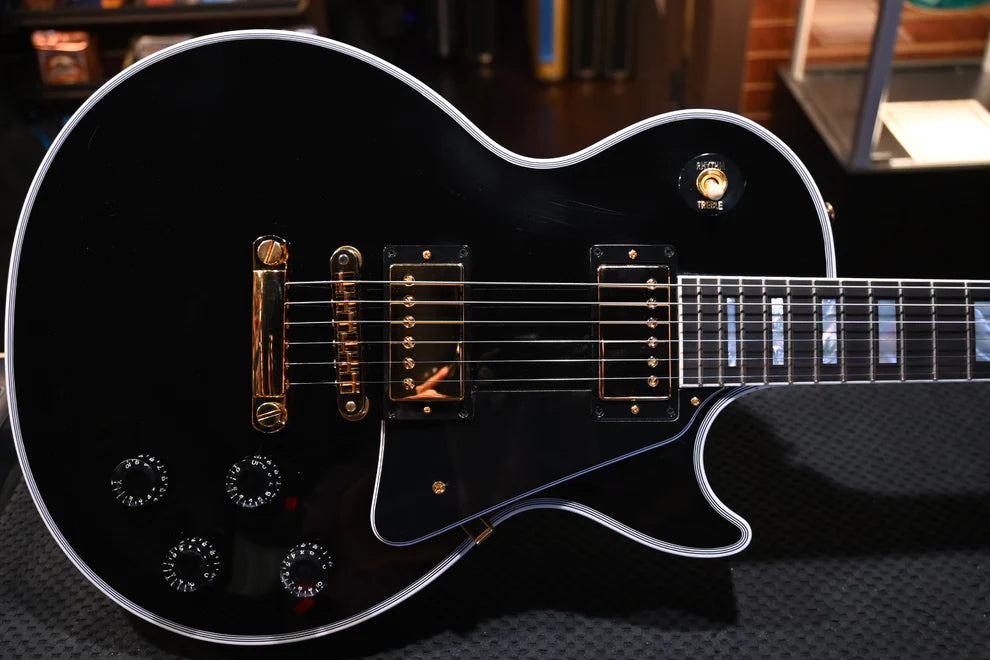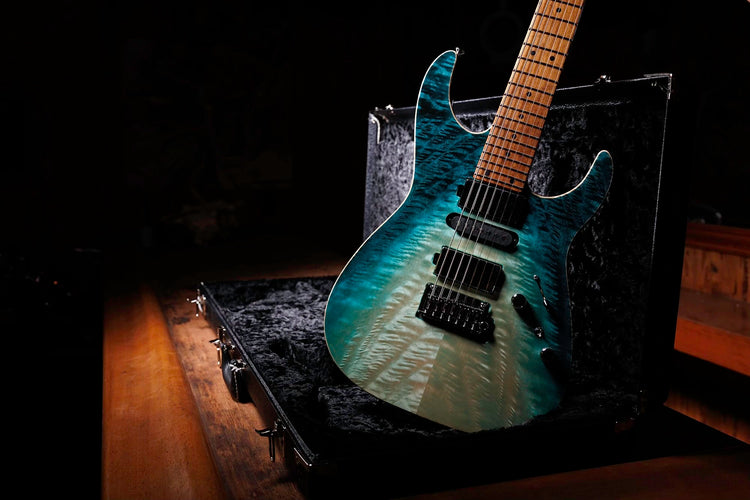Introduction
The world of acoustic-electric guitars is large and immersive, with many brands and designs vying for the attention of artists. Among these, Gibson stands apart not only for its abundant history but also for the quality and workmanship that goes into each instrument. In this detailed guide, we will dive deep into Playing Strategies That Shine on a Gibby Acoustic-Electric Model, checking out how to get the most out of these flexible guitars. Whether you're a skilled entertainer or just starting your musical journey, learning the right methods can elevate your playing experience.
In a market filled with alternatives, why should you consider a Gibson acoustic-electric design? Beyond their aesthetic appeal, Gibson guitars are understood for their distinct tonal qualities and playability. This short article will cover numerous elements of playing these instruments, from fingerstyle techniques to strumming patterns, guaranteeing that you have all the tools you require to shine in your musical endeavors.
Understanding Acoustic-Electric Guitars
What is an Acoustic-Electric Guitar?
An acoustic-electric guitar is essentially an acoustic guitar equipped with electronic pickups that enable it to be amplified. This feature makes them ideal for live performances where sound forecast is essential. But what sets these guitars apart?
Natural Sound: The body style boosts resonance. Amplification Choices: Built-in pickups provide versatility. Portability: Easy to carry while still providing great sound.Why Select a Gibson Acoustic-Electric?
When discussing acoustic-electric models, Gibson's offerings often top the list due to their renowned status and quality construction. The brand has actually improved its craft over years, making its guitars not just instruments however art pieces.
Key Functions of Gibson Acoustic-Electric Designs:
- Solid Wood Construction: Supplies superior noise quality. Elegant Design: Timeless aesthetics. Quality Electronics: Ensures faithful noise reproduction.
Exploring Various Playing Techniques
Fingerstyle Method: The Heart of Expression
Fingerstyle guitar playing offers nuances that strumming can not achieve. It enables musicians to reveal feeling through tune and consistency simultaneously.
Basic Fingerstyle Patterns
To start with fingerstyle on a Gibby acoustic-electric model:
Use your thumb for bass notes (E, A, D strings). Employ your index and middle fingers for tune (G, B strings). Experiment with rotating bass lines to produce depth.Strumming Patterns: Bringing Rhythm to Life
Strumming is vital in many musical categories; mastering it can change your performance drastically.
Common Strumming Patterns
Here are some popular patterns to practice:
|Pattern Name|Description|| ---------------------|------------------------------|| Down-Up-DOWN-Up|Basic folk strum|| DDU-UDU|Common in pop music|| Down-Down-Up-Up-Down|Popular in rock|
Dynamic Techniques for Performance Enhancement
Using Dynamics Effectively
Dynamics refer to the volume of music while playing-- how loud or soft you're strumming or selecting can enhance emotional expression.
How to Integrate Dynamics?
Vary your attack on strings; hit them harder for louder sounds. Use softer finger motions during delicate sections. Practice crescendos-- gradually increasing volume-- in addition to decrescendos-- decreasing volume smoothly.Utilizing Harmonics in Your Playing
Harmonics add a glittering quality to your noise; they're special techniques worth mastering on any guitar however especially reliable on a Gibby acoustic-electric model.
How to Play Harmonics?
Lightly touch the string above the fret (generally around 5th, 7th, or 12th stresses). Pluck the string gently; you'll hear a bell-like tone that resonates beautifully.Advanced Methods Worth Mastering
Tapping Technique: A Modern Approach
Tapping might seem like a sophisticated technique reserved for electrical gamers; nevertheless, it can be adapted wonderfully on an acoustic-electric design too.
gibson sg guitars
Steps for Efficient Tapping:
Choose a tune line that matches open chords. Use both hands successfully-- your stressing hand plays notes while tapping creates additional melodies. Remember to maintain clearness in your notes by making sure each tap is distinct.Percussive Aspects in Acoustic Playing
Adding percussive aspects can make your performance more engaging; think of it as utilizing your guitar as both an instrument and a drum.

How To Get going with Percussive Playing?
Slap or tap the body of the guitar while playing chords. Combine fingerpicking with soft strums for balanced emphasis. Experiment with different parts of the guitar body-- the hollow part produces different sounds than tapping on the neck.Exploring Genre-Specific Techniques
Folk Music Basics on Your Gibby Model
Folk music frequently stresses storytelling through song-- a technique finest matched to acoustic styles.
Techniques In Folk Music:
- Simple chord progressions Emphasis on fingerpicking Use of capos for key changes
Blues Methods That Resonate Deeply
The blues has roots deeply ingrained in emotion; mastering this category includes a number of particular methods:
Essential Blues Guitar Techniques
Sliding between notes develops smooth transitions. Utilize bends and vibratos for psychological effect. Incorporate call-and-response patterns normal in blues music.Improvisation Abilities: Letting Creativity Flow
The Art of Improvisation
Improvisation permits artists to express themselves spontaneously utilizing scales and arpeggios over chord progressions.
Tips for Successful Improvisation
Familiarize yourself with common scales (e.g., pentatonic scale). Listen actively-- keep in mind of structure within songs you love. Practice jamming with backing tracks or other artists regularly.--
Guitar Upkeep Tips
Keeping Your Gibby Acoustic-Electric in Shape
To ensure durability and optimum sound quality from your guitar, routine maintenance is essential:
Regular Care Guides
- Clean strings after each usage-- this avoids corrosion. Store correctly-- prevent severe temperature levels or humidity levels. Schedule expert setups every year if you're severe about efficiency quality.
Frequently Asked Questions
1) What are some common errors when playing an acoustic-electric guitar?
Many beginners struggle with improper finger positioning or lack control over dynamics which can prevent sound quality significantly.
2) Can I enhance my Gibson SG guitars?
Absolutely! Although SG designs are mainly electric guitars, they can be fitted with pickups permitting amplification comparable to acoustic models!
3) How do I choose in between fingerstyle and strumming?
It depends upon the song's category and individual preference! Fingerstyle fits more detailed pieces while strumming fits well with balanced songs!
4) Do I need special strings for my Gibby model?
While standard strings work well initially, think about try out layered strings designed particularly for acoustics-- they last longer!

5) Can I play classical pieces on an acoustic-electric guitar?
Certainly! Numerous classical pieces adjust perfectly when played on an acoustic-electric model through careful plan techniques!

6) How frequently must I alter my guitar strings?
As a basic general rule, change them every couple of weeks if played regularly-- or sooner if they lose brightness or feel rough against your fingertips!
Conclusion
In conclusion, mastering different gibson sg guitars playing strategies that shine on a Gibby Acoustic-Electric Model needs commitment and practice however provides tremendous rewards both musically and personally! From fingerstyles that stimulate emotion through harmonics enhancing melodies-- to exploring percussive aspects bringing rhythm alive-- the possibilities are practically unlimited! Incorporating diverse methods will not only improve technical abilities however also enrich creative expression regardless if you prefer traditional masters like Gibson Les Paul or contemporary legends like Gibson SG guitars! So get that gorgeous instrument today; let those notes circulation easily while captivating audiences everywhere!